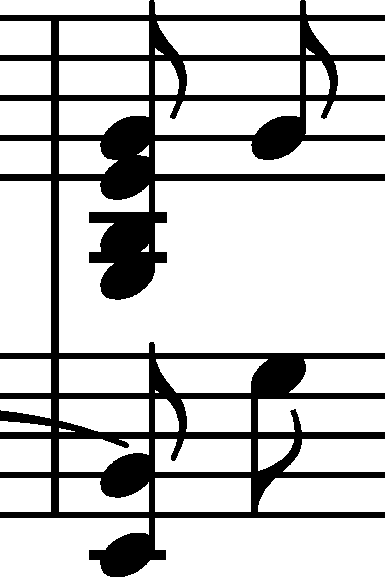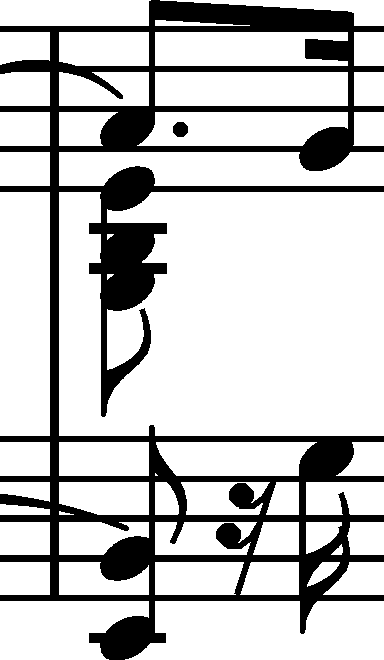



Issues : Dotted or even rhythm
|
b. 122
|
composition: Op. 22, Polonaise
..
Two quavers in EE is the initial version, most probably authentic. In FE one can see that the dotted rhythm was introduced only just at the stage of proofreading. category imprint: Differences between sources; Corrections & alterations issues: Authentic corrections of FE , Main-line changes , Dotted or even rhythm |
||||||||
|
b. 182
|
composition: Op. 2, Variations, complete
..
In AsI there are two semiquavers at the end of the bar in the first record (b. 182), whereas the second one (b. 182') includes a dotted rhythm, compliant with the versions of the remaining sources. The respective variants are included in the note below. category imprint: Differences between sources; Corrections & alterations issues: Main-line changes , Dotted or even rhythm |
||||||||
|
b. 182
|
composition: Op. 2, Variations, complete
..
The second record of this bar in AsI (b. 182') most probably contains two versions. We consider the first one, written in normal, clear script, to be the principal one. The only difference between this version and the final one is the presence of semiquavers instead of dotted rhythm on the 2nd quaver in the bar. Chopin then complemented this record with a draft of a version in which the rhythm was significantly enriched; we present a possible interpretation thereof as an alternative version. As we can see, Chopin did not use this idea while preparing the Variations for print; however, we can find similar figures in b. 180, 192 and 196 of the final version. category imprint: Graphic ambiguousness; Differences between sources; Corrections & alterations; Source & stylistic information issues: Dotted or even rhythm |
||||||||
|
b. 189
|
composition: Op. 2, Variations, complete
..
Chopin diversified the L.H. figuration in terms of rhythm and articulation in A (→GE→FE,EE,FESB). The idea must have been conceived before the place was written down in A, since there are no traces of corrections. category imprint: Differences between sources; Corrections & alterations issues: Accompaniment changes , Dotted or even rhythm |
||||||||
|
b. 202
|
composition: Op. 44, Polonaise in F♯ minor
..
The corrections visible in AImaz reveal that not only did Chopin change the pitch of the top note of the 1st chord, but also the rhythm of the 1st beat of the bar. The starting point were 2 g category imprint: Corrections & alterations; Source & stylistic information issues: Dotted or even rhythm |


 1 quavers, not beamed:
1 quavers, not beamed:  . Chopin then added semiquaver rests and shortened the second quaver:
. Chopin then added semiquaver rests and shortened the second quaver:  . Eventually, the change of the pitch of the top note of the chord brought further changes to the notation, including the abandonment of the rest in the R.H. part:
. Eventually, the change of the pitch of the top note of the chord brought further changes to the notation, including the abandonment of the rest in the R.H. part:  .
.